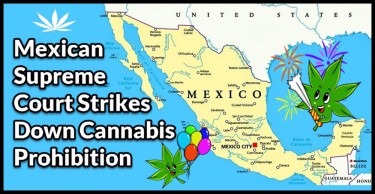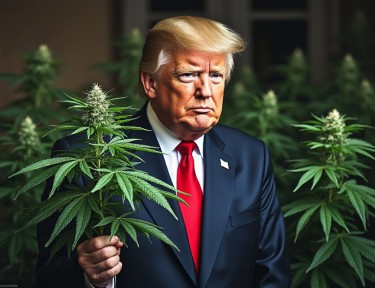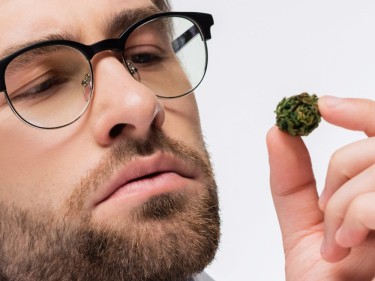Cannabis News
What Happened to Mexico’s Marijuana Market and What Do Cartels Think about Cannabis Legalization Now
Published
2 years agoon
By
admin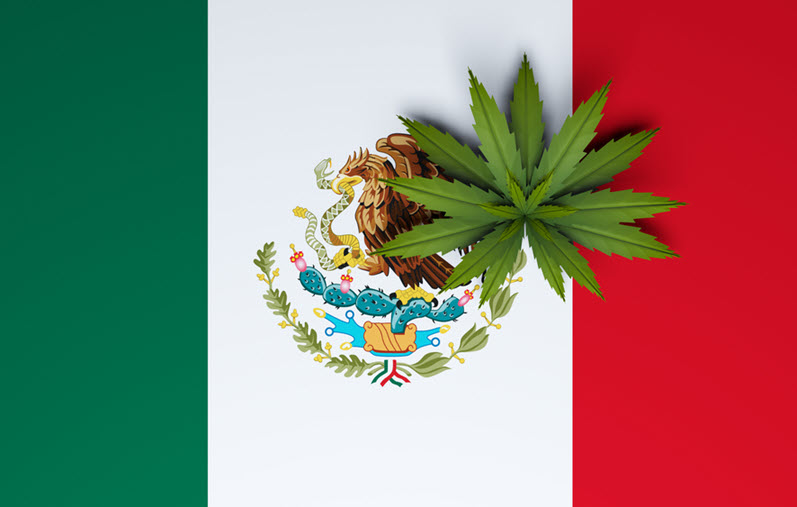
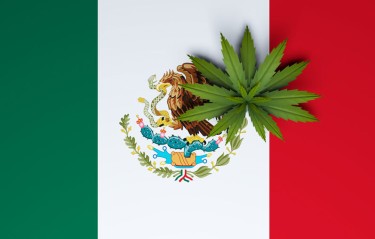
What happened to Mexico’s Marijuana Market & why the Cartels are Interested in Legalization
As we all know, Mexico has been a hotbed of drug-related violence and corruption for decades, with powerful cartels controlling much of the country’s illicit drug trade.
But what about cannabis legalization? Well, that’s a whole other story. While many had hoped that Mexico would follow in the footsteps of its northern neighbor and legalize cannabis, the reality is that legalization seems to have fallen off the map.
So, what happened? Why has there been a deafening silence on the topic of cannabis legalization in Mexico? Was it just a pipe dream? Or have other forces at play put a stop to progress on this front?
But, as is often the case with drug policy, things are never quite as straightforward as they seem. While the government may have dragged its feet on cannabis legalization, that doesn’t mean that cannabis use has come to a halt in Mexico. In fact, far from it.
In the absence of legal cannabis, activists have taken matters into their own hands, setting up makeshift cannabis dispensaries and cultivating their own crops. And while these activists are certainly making strides in the fight for cannabis legalization, they’re not the only ones interested in the lucrative potential of legal cannabis in Mexico.
That’s right, partner, the cartels have their sights set on the legal cannabis market in Mexico. With their fingers already in the proverbial pie when it comes to the illicit drug trade, it’s not hard to see why they’d be interested in branching out into legal cannabis.
So, buckle up, folks, because we’re about to take a wild ride through the complex and often-confusing world of drug policy in Mexico. We’ll be exploring everything from the government’s lack of progress on cannabis legalization to the rise of the activist movement and the growing interest of the cartels in legal cannabis.
It’s a wild ride, but one that’s sure to shed some light on the ongoing struggle for drug policy reform in Mexico.
Let’s take a trip down memory lane and check out the history of recreational marijuana use in Mexico. In the early 16th century, those Spaniards introduced marijuana to Mexico through hemp, using it to make ropes and textiles. But when the subsidies from the Spanish vanished after the Mexican War of Independence, the production of marijuana fell to its lowest point.
Academic research studies have shown that the Mexican people have used marijuana for ritual and divination purposes for a long time. They used it for recreational purposes along with pain cures, and it was freely used by people until 1898. But then, in 1882, a military hospital banned its use for recreational purposes because of the problems associated with it, including violence, crimes, and disorders.
Things took a turn for the worse when in 1920, Mexican law prohibited the sale, purchase, production, and use of recreational marijuana, and Mexico completely banned the export of weed in 1927. Then the US government launched a controversial program during the 1970s to eradicate the production of weed and poppy fields in Mexico, using helicopters and other tools to spray paraquat on cannabis fields, which contaminates marijuana and other herbs.
But don’t worry, friends! In August 2009, Mexico-marijuana lawmakers established a law that allowed the possession of small amounts of cannabis. The government decriminalized marijuana to reduce illegal drug activity and allowed five grams of cannabis for personal consumption. They even advised people caught possessing five grams of cannabis to seek a drug rehabilitation center instead of sending them to prison.
In 2015, the court voted 4-1 that prohibiting the production of cannabis was unconstitutional as it is against human rights. The supreme court allowed four individuals from the Mexican Society for Responsible and Tolerant Personal Use (SMART) to produce and consume cannabis. In 2017, president Enrique Peña Nieto signed a law to allow medical cannabis with less than one percent THC.
Fast forward to 2021, when the lower house of the Mexican Congress legalized the recreational use of cannabis in a 316-to-219 vote. President Andrés Manuel López Obrador supported the marijuana legalization bill, and it has been expected that legislation will be passed through the Senate before reaching the president. The supreme court has allowed personal possession, but Congress has not made rules about the personal use of cannabis in Mexico yet. But the bottom line is that cannabis is legal in Mexico according to the June 2021 supreme court ruling. The supreme court legalized adult-use cannabis by 8-3 votes, as the prohibition of personal use of cannabis was unconstitutional.
However, that’s where this story ends for us…we can sadly go no further. Because as we mentioned, there hasn’t been much movement on the legality of cannabis in Mexico.
Nonetheless, there are other people still part of the cannabis industry…players that have benefited from prohibition are beginning to take a closer look at the prospects of a “legal marijuana industry” in Mexico.
Margarita, a 51-year-old farmer, wakes up every day at 5 a.m. to tend to her marijuana plants. She looks after her crop with great care, covering them with a camouflage-shaded cloth to avoid unwanted attention. For generations, her family has been harvesting marijuana, and she is no different.
Despite the fact that Margarita does not work for any cartels or criminal organizations, her product still reaches buyers through independent distributors, as well as the Sinaloa Cartel, whose jailed kingpin, Joaquin “El Chapo” Guzmán, was born in Badiraguato, where she lives.
But the times have changed, and the marijuana industry is no longer what it once was. Margarita struggles to sell her product as much as she did five years ago. With the current price for weed, Margarita earns only $25 per kilo, and more than half of her harvest remains unsold.
To make ends meet, Margarita relies on a government assistance program called “Sembrando Vida,” which gives roughly $220 a month to small farmers in states like Sinaloa, Chihuahua, and Durango, to encourage local development and discourage drug production.
But Margarita still worries about how she will sustain herself if she cannot sell her crop. She tried to switch to tomato farming, but it sells even worse than marijuana. Big companies take all the sales, and she has very little to offer in quantity.
Meanwhile, negotiations to legalize marijuana in Mexico have stalled. Although the Senate passed a bill legalizing recreational use of marijuana in 2021, lawmakers in the lower house are still holding up the measure. Margarita remains barred from formal sales in Mexico, and while criminal groups position themselves in what could soon be a legal market, independent growers like Margarita are left to worry about their future.
Despite the Mexican government’s slow progress in legalizing marijuana, activists in the country are still pushing forward to make a change.
The government has created a legal mechanism for people to grow cannabis and be protected against prosecution, but it has yet to make any significant strides in legalizing marijuana. Nevertheless, the Mexican cannabis market is evolving, and activists are getting ready.
With more states in the US legalizing cannabis, there is more demand for high-quality Mexican weed, and some activists are taking advantage of this. They are investing in creating high-quality strains of cannabis, and some are even taking steps to create cooperatives to grow and distribute marijuana.
These cooperatives are self-sufficient and do not rely on the government to provide them with resources.
In addition, activists are educating the public about the benefits of cannabis and its various uses. They are working hard to change the public perception of cannabis and its users, which has been negative for many years. Despite the obstacles they face, these activists remain committed to the cause, and their efforts are beginning to pay off. The Mexican cannabis market is rapidly changing, and activists are leading the way towards a brighter future for the country’s marijuana industry.
The Mexican cartels have been eyeing the cannabis market for years. They have seen the potential for massive profits, and their interest has only grown as legalization efforts have stalled in the government. For the cartels, it’s not just about the money. They feel entitled to the cannabis market, almost like it’s their calling. After all, many of them have been involved in the illegal cannabis trade for decades. It’s a part of their identity, their culture. They see themselves as the protectors of the cannabis plant, and they are not going to let the government take it away from them without a fight.
But the cartels also see the potential for something bigger. Just as the American Mafias integrated their bootlegging operations into legal alcohol markets during Prohibition, the cartels could potentially do the same with cannabis. By becoming involved in the legal market, they could become less violent and more legitimate. However, unlike the Mafias, the cartels deal in multiple illegal activities, including human trafficking, money laundering, and drug smuggling. Even if they were to become involved in legal cannabis, they wouldn’t stop doing the illegal stuff. They would continue to operate in the shadows, making money off of other illegal activities while using the legal cannabis market as a front.
Some cartels are already preparing for the eventual legalization of cannabis in Mexico. They are studying the success of dispensaries in the US and investing heavily in the development of new strains of cannabis. They believe that they can produce the best weed in the world and that people will come to them for it, whether it’s legal or not. They see themselves as the future of the cannabis industry in Mexico, and they are not going to let anyone else take that away from them. For the cartels, cannabis is not just a drug or a way to make money. It’s a way of life, and they will do whatever it takes to protect it.
The stories of Margarita, the activists, and the cartels all paint a picture of the evolving Mexican cannabis marketplace. While the government may be slow to act, the people are not waiting around. Margarita continues her family’s legacy of marijuana farming, but faces new challenges in a changing market. Activists are pushing for change and finding legal mechanisms to grow cannabis while avoiding prosecution. And the cartels are preparing to take advantage of the new opportunities that a legal market will bring.
What’s happening in the Mexican cannabis marketplace is complex and evolving quickly. Those who still think of Mexican weed production as being about “bricks” are mistaken. The market is changing and adapting, and people like Margarita and the activists are leading the way. And when Mexico steps into the international cannabis arena, they will be a force to be reckoned with. The cartels will make sure of it.
But the evolution of the market is happening in the dark. There is so much that people don’t understand about what’s happening in Mexico’s cannabis industry. The legal mechanisms for growing cannabis are still not widely known or understood. And the cartels, while interested in a legal market, are still involved in multiple illegal activities.
Despite the challenges, the people of Mexico are pushing forward. And as the market evolves, so too will the opportunities. So, while you can still buy bricks from Margarita for $25 a kilo, it won’t be long before the Mexican cannabis industry becomes something completely different, and internationally relevant.
MEXICO LEGALIZATION, READ ON…
You may like
Cannabis News
The Cannabis Rescheduling Ruse – White House Says No Action Planned on Cannabis Reform, Hate to Say I Told You So!
Published
1 day agoon
April 5, 2025By
admin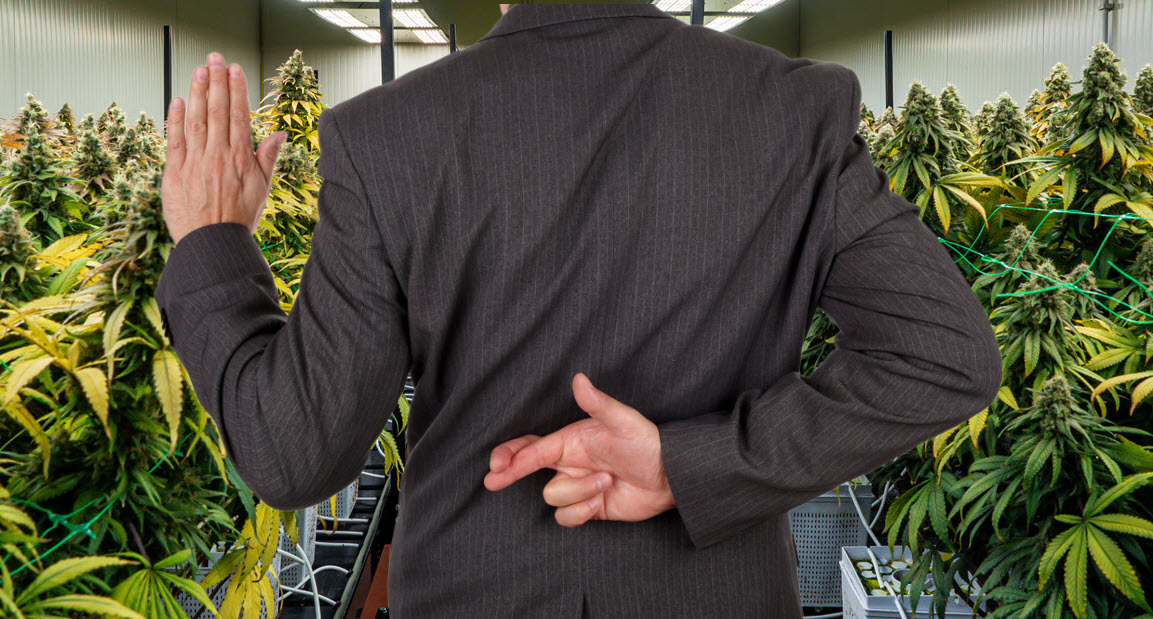
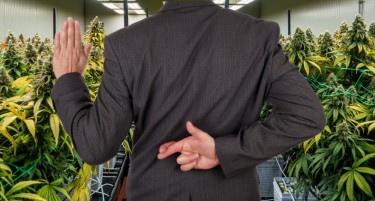
The Rescheduling Ruse: Why I Told You So
In a move that surprised absolutely no one who’s been paying attention, the White House recently announced it has “no action planned” on marijuana reform. Yes, the same marijuana reform that President Trump enthusiastically backed on the campaign trail just weeks before Election Day.
The writing was on the wall all along, folks. I’ve been telling you for months that the much-hyped rescheduling of cannabis from Schedule I to Schedule III was nothing more than political theater – a carefully choreographed dance designed to generate headlines without delivering substantive change. And here we are, with yet another administration putting cannabis reform on the back burner while millions of Americans continue to live under the shadow of failed prohibition policies.
Don’t get me wrong – I’m not here to play political favorites. This isn’t a red versus blue issue. The Biden administration dangled the same carrot, initiating a rescheduling process that conveniently stalled due to “complications” with DEA hearings. Different players, same game.
Let’s take a step back and examine what’s really happening here, because the truth about cannabis reform in America is both simpler and more complex than most people realize.
Trump’s pre-election cannabis conversion was quite the spectacle, wasn’t it? Suddenly, the man who selected Jeff “Good People Don’t Smoke Marijuana” Sessions as his first Attorney General was voicing support for rescheduling, banking access, and even Florida’s legalization initiative.
But as CNN recently reported, “no action is being considered at this time.” The honeymoon didn’t even last through the first dance. The administration’s priorities lie elsewhere – immigration, government spending, foreign policy – while cannabis reform gets shelved alongside countless other campaign promises.
Interestingly, CNN did note that Trump and his transition team attempted to include cannabis banking protections in December’s government funding resolution. This behind-the-scenes effort suggests at least some genuine interest in the issue, but hardly qualifies as the bold reform millions of voters were led to expect.
This pattern should feel familiar. The Biden administration made similar overtures, with the president announcing pardons for federal marijuana possession offenses and directing an administrative review of cannabis scheduling. That process dragged on for over a year, with the DEA repeatedly delaying final action. Biden got the headlines; cannabis users got nothing.
The harsh reality? Cannabis reform makes for good campaign fodder, but terrible governance priorities. Once elected, the political calculus changes dramatically. The motivation to deliver evaporates when the votes are already counted and the special interests start calling in their favors.
At the heart of this perpetual delay lies the Drug Enforcement Administration – an agency whose very existence depends on the continuation of the drug war. Expecting the DEA to facilitate cannabis reform is like asking a turkey to vote for Thanksgiving.
The DEA has mastered the art of procedural obstruction. Under Biden, they scheduled hearings, requested extensions, and effectively ran out the clock. Under Trump, they appear poised to do absolutely nothing, perhaps not even bothering with the pretense of consideration.
The pattern becomes clearer when you look at Trump’s cabinet picks. His nominee to lead the DEA, Terrance Cole, has previously voiced serious concerns about marijuana dangers and linked its use to higher suicide risk among youth. His HHS general counsel nominee, Mike Stuart, is so staunchly anti-cannabis that prohibitionist groups openly celebrated his selection.
Even Robert F. Kennedy Jr., who previously supported legalization, has walked back his stance since being confirmed as HHS Secretary, stating he’s “worried about” high-potency marijuana and deferring to the DEA on rescheduling.
When you stack the regulatory deck with cannabis skeptics, you’ve telegraphed your true intentions no matter what you said on the campaign trail.
Here’s what I’ve been saying all along: meaningful cannabis reform was never going to come from the White House, regardless of who occupied it. The DEA will never willingly relinquish its power, and politicians will always prioritize easier wins over controversial reforms.
The only real path forward is through Congress completely removing cannabis from the Controlled Substances Act. Full stop. No rescheduling, no administrative reviews, no half-measures. Cannabis needs to be descheduled entirely, returning regulatory authority to the states where it belongs.
But while we push for that goal, the real revolution continues on two fronts.
First, state-by-state legalization marches forward. Despite federal inaction, 38 states have medical marijuana programs, and 24 states plus DC have legalized adult use. Each new state that joins the ranks weakens prohibition’s grip and demonstrates the failure of federal policy.
Second, and perhaps more powerful, is what I call “mass defiance of an unjust law.” Every day, millions of Americans peacefully consume cannabis in direct violation of federal law. They grow it in their homes, share it with friends, and build communities around it. This civil disobedience at scale is perhaps the most effective weapon against prohibition.
The federal government simply doesn’t have the resources to enforce cannabis prohibition against a population that increasingly rejects it. When enough people break an unjust law, the law itself becomes unenforceable.
I hate to say I told you so, but… I told you so. The rescheduling promise was never going to materialize, regardless of who won the White House. It was a political mirage, designed to attract voters while requiring minimal commitment.
But don’t mistake my cynicism about federal action for pessimism about our cause. Cannabis reform is happening – it’s just happening from the ground up rather than the top down. Every state that legalizes, every municipality that decriminalizes, every voter who demands change, and yes, every person who peacefully consumes despite prohibition is part of this unstoppable movement.
The lesson here is simple: Don’t put your faith in presidential promises or administrative processes. Put it in your local ballot initiatives, your state legislators, and your own power to reject unjust laws through peaceful non-compliance.
Cannabis prohibition is dying, not because presidents commanded it, but because we the people have decided it must end. That’s the real power in our democracy – not the fleeting promises of politicians, but the sustained will of the citizens.
So next time a candidate promises to fix cannabis laws, remember this moment. Then go out and fix them yourself, one vote, one state, and one act of principled defiance at a time. That’s how real change happens in America, and that’s how we’ll finally end cannabis prohibition once and for all.
CANNABIS UNDER TRUMP 2.0, READ ON…
Cannabis News
Why Quitting Alcohol or Weed Won’t Heal the Pain That Caused You to Start Using Them in the First Place
Published
1 day agoon
April 5, 2025By
admin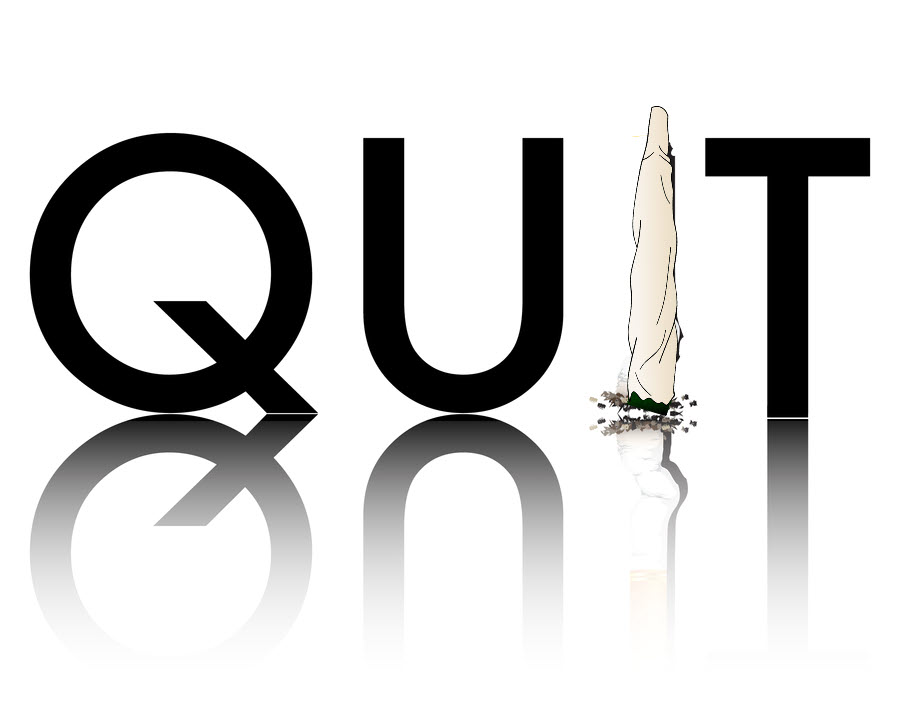
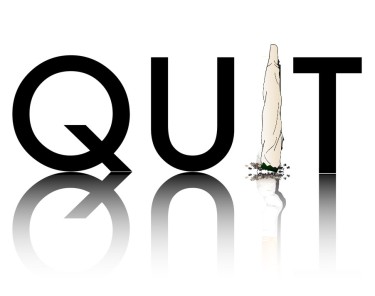
Quitting Won’t Fill the Hole
There’s a pervasive notion that floats around recovery circles—this idea that once you kick your habit, everything will magically fall into place. The clouds will part, the birds will sing, and suddenly life will be worth living again. While it’s true that being addicted to a “thing,” whether substance or act, eventually tallies up consequences that weigh heavy on our souls, the math isn’t quite as simple as “remove addiction, add happiness.”
I’ve watched countless cannabis enthusiasts (and addicts of all stripes) fall into this trap. They sit in circles, eyes gleaming with hope as they declare, “If I could only quit, then everything would be better…” But they’re missing something crucial—their addiction isn’t the source of their discontent; it’s merely a symptom of something deeper.
Addiction, at its core, is a means of dealing with something we cannot name or are desperately trying to avoid. It’s the bandage we slap over a wound without cleaning it first. The cannabis, the alcohol, the gambling, the endless scrolling—these aren’t the disease itself but rather the body’s misguided attempt at self-medication.
Here’s the uncomfortable truth that most recovery programs don’t emphasize enough: if you don’t do the real healing, even if you manage to white-knuckle your way through quitting one addiction, you’ll inevitably find something else to cover that gaping wound. Maybe you’ll trade joints for junk food, or bongs for binge-watching. The face of the addiction changes, but the role it plays remains constant.
Let’s take a deeper dive into this cycle and why simply quitting isn’t enough to truly heal.
First, we must acknowledge that when it comes to pain and addiction, everyone’s journey is unique. What feels like an insurmountable mountain to you might be a speed bump to someone else, and vice versa. There’s no universal scale for suffering, which makes navigating these waters all the more complex.
However, across all these varied experiences, there’s a common trap I’ve seen ensnare countless individuals—what I call the “If/Then Fallacy.” It’s the belief that one singular thing is the root cause of all our discomfort. This is where addicts often say, “If I can only kick this addiction, then my whole life would be better.” While this may seem logical on paper, it’s a deeply flawed perspective.
The real issue rarely lies with the substance or behavior itself but with something deeper—something the addiction is helping us avoid or cope with. Whether it’s trauma, depression, anxiety, or simply the existential weight of being human in an increasingly disconnected world, there’s usually a wound beneath the bandage.
Furthermore, the “If/Then” scenario places your healing, joy, and accomplishments in a fictional future state. “If I stop smoking weed, then I’ll finally have the motivation to start that business.” “If I quit drinking, then my relationship will improve.” These statements create a dangerous binary—because when the “if” is satisfied but the “then” doesn’t materialize, where does that leave you? Often, it leads to “If that didn’t work, then what’s the point of trying anything?”
This thinking creates a perfect setup for relapse or substituting one addiction for another. After all, if quitting didn’t magically transform your life as promised, why continue to deny yourself that temporary relief?
If you’ve been considering quitting cannabis or any other addiction, and you believe it to be the sole source of your unhappiness, I strongly urge you to reconsider your framework. The cannabis, or your relationship with it, is likely just a mask for your real pain. If you want to truly liberate yourself from the burden of addiction, you need to develop the capacity to sit with your pain, examine it, and cultivate joy despite it—not because it disappeared.
This article was inspired by a post I came across while scrolling through Reddit the other day—one of those moments where someone’s raw honesty stops you mid-scroll. A 32-year-old man shared that after smoking cannabis and drinking 4-6 beers daily for nearly his entire 20s, he had finally managed to quit both. No cannabis for almost six months, no alcohol for three. A significant achievement by any measure.
Yet instead of the transformation he expected, he felt “MISERABLE.” Despite taking medication for ADHD and anxiety, and despite removing substances that conventional wisdom says should improve his mental health, he felt no positive change. In fact, he felt worse, as if he’d “stopped doing things that were fun for me, or at least making life bearable.”
His post ended with a plea that broke my heart: “Is this just how I’m going to feel now? Does this go away eventually?”
This redditor’s experience perfectly illustrates the point—even when you manage to power through the physical and psychological challenges of quitting an addiction, your mental and spiritual state doesn’t necessarily transform as a result. His baseline remained exactly the same, perhaps even dipping lower without the chemical crutches he’d relied on for so long.
When you’re changing habits but not experiencing the promised benefits, it’s a clear sign that your discomfort or pain isn’t primarily coming from the substance. The cannabis or alcohol wasn’t creating your misery—it was masking it, providing temporary relief from a deeper issue that remains unaddressed.
This is something we all must consider when facing our compulsions. If you find yourself in a situation where you want to stop a behavior but simply can’t, it might be time to look deeper. Ask yourself, “Why do I do this activity?” And then ask “why” five more times, each answer digging a layer deeper toward the root cause.
Why do I smoke cannabis every night? Because it helps me relax. Why do I need help relaxing? Because my mind races with anxiety. Why does my mind race with anxiety? Because I’m worried about my future. Why am I worried about my future? Because I don’t feel secure in my career path. Why don’t I feel secure in my career path? Because I never really chose it—I fell into it. Why does that bother me? Because I feel like I’m not living authentically or pursuing my true passions.
Once you’ve excavated to this deeper level, you can begin to address the root causes directly. Perhaps the issue isn’t the cannabis at all, but rather that you need to reassess your career path or find meaning outside of work. Without this deeper work, quitting the substance becomes an exercise in willpower rather than healing.
Your addiction isn’t necessarily the root cause of your issues—it’s often just the most visible symptom. If you’re depressed, anxious, or feeling lost, it’s not primarily because of the substance; it’s because of something deeper that the substance helps you manage or forget temporarily.
Unless you actually do the internal work on these matters—examining your pain, seeking appropriate mental health support, rebuilding healthy relationships, finding meaning and purpose—no matter what you quit or how long you stay “clean,” you’ll likely find yourself seeking new ways to shield yourself from the pain. The prison isn’t cannabis or alcohol; it’s the unhealed wound those substances help you endure.
If you’re struggling right now, it’s absolutely important to seek help. That might mean therapy, support groups, or speaking with a healthcare provider about potential underlying mental health conditions that need treatment. But alongside that external support, commit to the honest and difficult work of looking inward. Ask yourself what you’re truly trying to avoid when you reach for that joint or that drink.
At the end of the day, we all have our struggles. If yours involves cannabis at this point in your life, there’s no judgment here. I’ve been there myself. But I’ve also learned that true healing rarely comes from simply removing something from your life—it comes from adding understanding, self-compassion, and addressing the real gaps in your heart and mind that the substance was never capable of filling in the first place.
The void can’t be filled by quitting. But quitting might just give you the clarity to finally see what the void truly needs.
QUITTING CANNABIS, READ ON…
THE STONER’S GUIDE TO QUITTING WEED – WAIT, WHAT…WHY?
Cannabis News
Scientists Now Think That One Compound in the Cannabis Plant Can Replace All Opiates
Published
3 days agoon
April 3, 2025By
admin

Which Cannabis Compound Do Scientists Think Can Replace Opiates?
…And Why This Is Important
Opiates are a type of pharmaceutical drug that’s been made from the opium poppy plant. While it’s somewhat a ‘natural’ substance that’s been extracted from the fibers and sap of the opium poppy plant, these are extremely dangerous sedatives that act on the central nervous system. However, there are completely synthetic opioids as well, which are manufactured entirely in laboratories.
Famous examples of well-known and widely-used opiates today include heroin, codeine, and morphine. They all work similarly, binding to the brain’s opioid receptors and users feel a drastic reduction in pain. It also causes users to feel euphoric, drowsy, or sleepy. Common side effects include constipation and nausea.
Because opiates are powerful for dulling one’s pain perceptions, they have become commonly prescribed by doctors and hospitals for pain relief. That said, opiates have become one of the world’s most addictive, dangerous, and fatal drugs – and you can get prescribed it right by your very own physician. Repeated use of opiates can easily lead to dependence and addiction, and eventually consuming high doses can drastically slow down breathing, and cause brain damage, or even death.
Since doctors still keep prescribing opioids, this has resulted in the deadly Opioid Epidemic, which has killed thousands of people. It’s a worrisome public health crisis, most especially because of fentanyl, an illegally manufactured opioid which is said to be 50 times more potent than heroin.
Could The Answer To The Opioid Epidemic Lie In Cannabis…Terpenes?
The past few years have shown that cannabis legalization is critical for surviving the opioid epidemic, and reducing overall opioid consumption.
The results of a recent research paper, which builds on past studies conducted by Dr. John Streicher, who is a member of the Comprehensive Center for Pain and Addiction, reveals fascinating findings. According to Streicher, cannabis terpenes were found to provide relief in inflammation models as well as on neuropathic pain caused by chemotherapy.
For the study, Streicher and his research team analyzed 4 kinds of terpenes that are found in mid to high levels in Cannabis sativa plants: linalool, geraniol, beta-caryophyllene, and alpha-humulene. They discovered that each terpene produced significant pain relief among mice subjects with fibromyalgia and post-operative pain, and among the terpenes, geraniol was found to be the most powerful.
“Our research is showing that terpenes are not a good option for reducing acute pain resulting from an injury, such as stubbing your toe or touching a hot stove; however, we are seeing significant reductions in pain when terpenes are used for chronic or pathological pain,” he said. “This study was the first to investigate the impact of terpenes in preclinical models of fibromyalgia and post-operative pain and expand the scope of potential pain-relieving treatments using terpenes,” Streicher said.
Cannabis terpenes are the compounds responsible for the aromatic profile of each strain; they are located in the plant trichomes. Not only do they contribute to each strain’s unique flavor and odor, but they also have valuable therapeutic and medicinal benefits. There are around 150 kinds of terpenes known today, though in the entire plant world, there are known to be some 20,000 terpenes.
Understanding the therapeutic benefits of terpenes is incredibly valuable also because they don’t contain THC (tetrahydrocannabinol), the compound in marijuana that gets you high.
“With fibromyalgia, there isn’t much of an understanding of what the pain state is, and there are not a lot of great options for treating it,” explains Streicher. “Our findings show that terpenes may be a viable treatment option for fibromyalgia pain, which could potentially have a large impact and make a difference for an under-treated population.”
Other Studies
This is not the first time that cannabis terpenes have been found to demonstrate excellent pain-relieving properties. It must be noted that just like what Streicher says, terpenes seem to do better with chronic pain management, instead of acute pain management.
Another study from 2024, which was published in The Journal of the Association for the Study of Pain, was conducted by researchers at the University of Arizona and the National Institutes of Health. The investigators analyzed the analgesic properties of different terpenes including geraniol, humulene, linalool, pinene, and caryophyllene among mice subjects with chemotherapy-induced peripheral neuropathy.
According to the researchers, all the terpenes delivered analgesic effects that were equivalent to around 10 mg/kg of morphine. It was also interesting to note that administering both morphine and terpenes together at low doses resulted in ‘enhanced’ pain-killing effects.
“Together these studies identify cannabis terpenes as potential therapeutics for chronic neuropathic pain,” said the investigators.
There have also been other studies that have found that combining cannabis with opioids can indeed provide long-lasting pain relief. It comes with the added benefit of reducing opioid doses needed for effective pain control. This phenomenon is called opioid-sparing. These types of protocols can be beneficial for patients who suffer from severe, chronic pain caused by cancer, arthritis, joint problems, fibromyalgia, diabetes, post-surgical pain, migraines, nerve damage, and so much more.
Conclusion
Learning more about the pain-killing properties of terpenes is extremely valuable for the medical community, patients, and even society as a whole. We can all do with less opioid addictions because it has torn families apart, and caused the deaths of thousands of people.
Terpenes, or cannabis in general, offer a natural and safe alternative that can be complementary to other pharmaceutical treatments designed to reduce pain.
SWAPPNG OPIOIDS FOR CANNABIS, READ ON…

Couple arrested with large amounts of weed and molly

The Cannabis Rescheduling Ruse – White House Says No Action Planned on Cannabis Reform, Hate to Say I Told You So!

Why Quitting Alcohol or Weed Won’t Heal the Pain That Caused You to Start Using Them in the First Place

Oklahoma voters could weigh in on adult-use marijuana legalization in 2026

Karma Koala Podcast 247: Speaking with Dr. Natalie Corthésy senior lecturer university of West Indies & Enrico Bonadio professor of law City St George’s University of London about their forthcoming Edward Elgar title, “Intellectual Property and Cannabis”

MJBizCon offers speakers chance to share cannabis insights, shape industry

The Best Tariff Friendly Cocktails

Cannabis Consumers Are Being Hit By The Tariffs

The Best Tips To Update Your Wardrobe

Former New York Knick Iman Shumpert debuts ‘TSA Approved’ legal cannabis brand

Distressed Cannabis Business Takeaways – Canna Law Blog™

United States: Alex Malyshev And Melinda Fellner Discuss The Intersection Of Tax And Cannabis In New Video Series – Part VI: Licensing (Video)

What you Need to Know

Drug Testing for Marijuana – The Joint Blog

NCIA Write About Their Equity Scholarship Program

It has been a wild news week – here’s how CBD and weed can help you relax

Cannabis, alcohol firm SNDL loses CA$372.4 million in 2022

A new April 20 cannabis contest includes a $40,000 purse

Your Go-To Source for Cannabis Logos and Designs

UArizona launches online cannabis compliance online course
Trending
-

 Cannabis News2 years ago
Cannabis News2 years agoDistressed Cannabis Business Takeaways – Canna Law Blog™
-

 One-Hit Wonders2 years ago
One-Hit Wonders2 years agoUnited States: Alex Malyshev And Melinda Fellner Discuss The Intersection Of Tax And Cannabis In New Video Series – Part VI: Licensing (Video)
-

 Cannabis 1012 years ago
Cannabis 1012 years agoWhat you Need to Know
-

 drug testing1 year ago
drug testing1 year agoDrug Testing for Marijuana – The Joint Blog
-

 Education2 years ago
Education2 years agoNCIA Write About Their Equity Scholarship Program
-

 Cannabis2 years ago
Cannabis2 years agoIt has been a wild news week – here’s how CBD and weed can help you relax
-

 Marijuana Business Daily2 years ago
Marijuana Business Daily2 years agoCannabis, alcohol firm SNDL loses CA$372.4 million in 2022
-

 California2 years ago
California2 years agoA new April 20 cannabis contest includes a $40,000 purse



